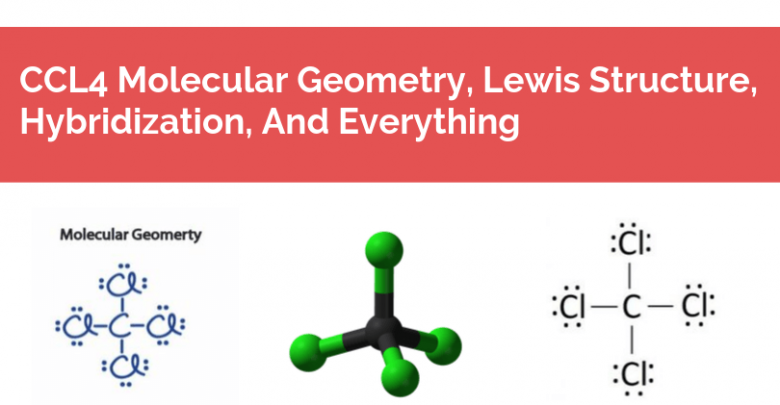Carbon tetrachloride, commonly known as CCl4, is a fascinating molecule that not only sweeps us into the realm of molecular geometry but also offers a rich tapestry of hybridization dynamics. At first glance, it may appear simplistic—a central carbon atom flanked by four chlorine atoms—but a deeper exploration reveals the intricate dance of atomic interactions and bonding that define its structure.
To fully appreciate CCl4’s hybridization, one must first understand the fundamental principles of atomic orbitals. The concept of hybridization is employed to explain the geometry and bonding of molecules in a more intuitive manner. In the case of carbon (atomic number 6), its electronic configuration is 1s² 2s² 2p². Carbon’s ability to form four covalent bonds is largely attributed to its ability to hybridize its atomic orbitals.
In CCl4, the central carbon atom undergoes sp³ hybridization. This means that one of the 2s electrons combines with three of the 2p electrons, resulting in four equivalent sp³ hybrid orbitals. The geometry that emerges from this hybridization process is tetrahedral, which is pivotal in maximizing spatial separation between the electron pairs, thereby minimizing electron pair repulsion. Understanding this geometry offers insights not just into molecular structure, but also into the physical properties and reactivity of the compound.
The ideal bond angles in a tetrahedral arrangement are approximately 109.5 degrees. However, this ideal is somewhat altered in reality, largely due to variations in electronegativity and molecular interactions. The chlorine atoms, being larger and more electronegative compared to hydrogen, create a slightly nuanced bond angle, altering the symmetry of the molecule ever so slightly. Despite these nuances, the tetrahedral shape of CCl4 is a key factor in its stability and non-polar characteristics.
CCl4 serves as a prime example of a non-polar molecule, thanks to its symmetrical structure. The individual C-Cl bond dipoles, while polar, counterbalance each other due to the tetrahedral geometry. This results in a net dipole moment of zero, rendering the molecule non-polar. Such properties are crucial in understanding its behavior and applications, particularly in organic synthesis and industrial processes.
When one contemplates the applications of CCl4, it becomes alluring to consider how its hybridization contributes to its functionality. Historically, CCl4 has been employed as a solvent, in dry cleaning, and as a precursor in the manufacture of various chlorinated compounds. However, its environmental implications are significant, warranting serious contemplation regarding its usage. The molecule has been identified as a potent greenhouse gas and an ozone-depleting substance. These attributes have prompted shifts in regulations and a gradual phase-out from various applications, reminding us of the interconnectedness between chemistry and environmental stewardship.
Exploring CCl4 also invites curiosity about its historical significance within the realm of molecular chemistry. The discovery of carbon tetrachloride dates back to the mid-19th century, and it soon garnered attention for its unique properties. Its emergence marked a turning point in industrial chemistry, paving the way for advancements in organic synthesis. However, as the narrative of carbon tetrachloride unfolds, it emphasizes the necessity of scrutinizing chemicals that initially seem benign yet reveal adverse environmental impacts as our understanding deepens.
Central to the discussion of hybridization in CCl4 is the broader context of how molecular geometry affects chemical reactivity. Hybridization shapes not only the molecular structure but also influences molecular interactions. For instance, sp³ hybridization results in single covalent bonds that are generally stable yet serve as a springboard for further reactions when CCl4 interacts with other molecules. The stability of the C-Cl bond means that CCl4 is relatively inert under normal conditions, yet it can undergo dehalogenation or various substitution reactions when influenced by reactive species.
Moreover, the study of hybridization opens up avenues to explore molecular behavior beyond GCl4. Altered hybridizations lead to fundamentally different properties and applications, making the understanding of such concepts essential for chemists and environmental scientists alike. By comprehending hybridization, one begins to appreciate the finer subtleties of molecular interactions, potentially leading to the design of novel compounds that might hold the key to resolving contemporary environmental issues.
In summary, the analysis of CCl4 and its sp³ hybridization is not merely an academic exercise; it is a lens through which one can explore how molecular chemistry intertwines with environmental responsibility. As we delve into the molecular structure, hybridization, and implications of carbon tetrachloride, we are reminded of the broader ecological narrative. Understanding these chemical fundamentals fosters a sense of responsibility, urging a reconsideration of how we utilize and regulate such compounds. Ultimately, as we seek sustainable solutions to combat climate change, the insights gleaned from CCl4 and its ilk illuminate the path toward a more harmonious relationship with our environment.
